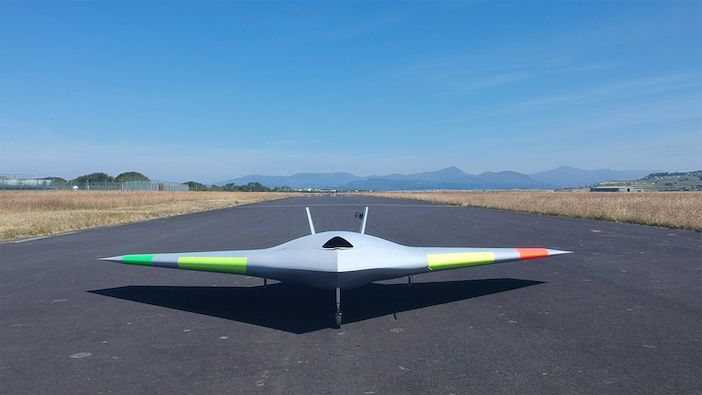Engineers at BAE Systems are testing a drone that can be manoeuvred in flight using supersonically blown air, removing the need for movable flight control surfaces.
The flight testing of the Magma drone took place at the Llanbedr Airfield in north-west Wales last month. The flight trials successfully demonstrated two “blown air” control technologies that replace moving surfaces such as flaps and ailerons and are designed to improve the control and performance of aircraft. Magma has been designed and developed by researchers at the University of Manchester and engineers from BAE Systems.
By replacing moving surfaces with the blown air technology, aircraft that are lighter, more reliable and cheaper to operate could be developed, said BAE Systems. The technologies could also improve an aircraft’s stealth as they reduce the number of gaps and edges that currently make aircraft more observable on radar.
Magma demonstrated two new ways to control an aircraft during flight. Wing circulation control, which takes air from the aircraft engine and blows it supersonically through narrow slots around a specially shaped wing tailing edge in order to control the aircraft.
Fluidic thrust vectoring controls the aircraft by blowing air jets inside the nozzle to deflect the exhaust jet and generate a control force.
Julia Sutcliffe, chief technologist at BAE Systems Air, said, “Our partnership with the University of Manchester has identified technology, in this case flap-free flight, and turned what began as a feasibility study into a proven capability in just a number of months. ”
Bill Crowther, senior academic and leader of the Magma project at The University of Manchester said, “We are excited to have been part of a long-standing effort to change the way in which aircraft can be controlled, going all the way back to the invention of wing warping by the Wright brothers.
“We made our first fluidic thrust vectoring nozzle from glued together bits of plastic and tested it on a hair drier fan nearly 20 years ago. Today BAE Systems is 3D printing our components out of titanium and we are flight testing them on the back of a jet engine in an aircraft designed and built by the project team.”





